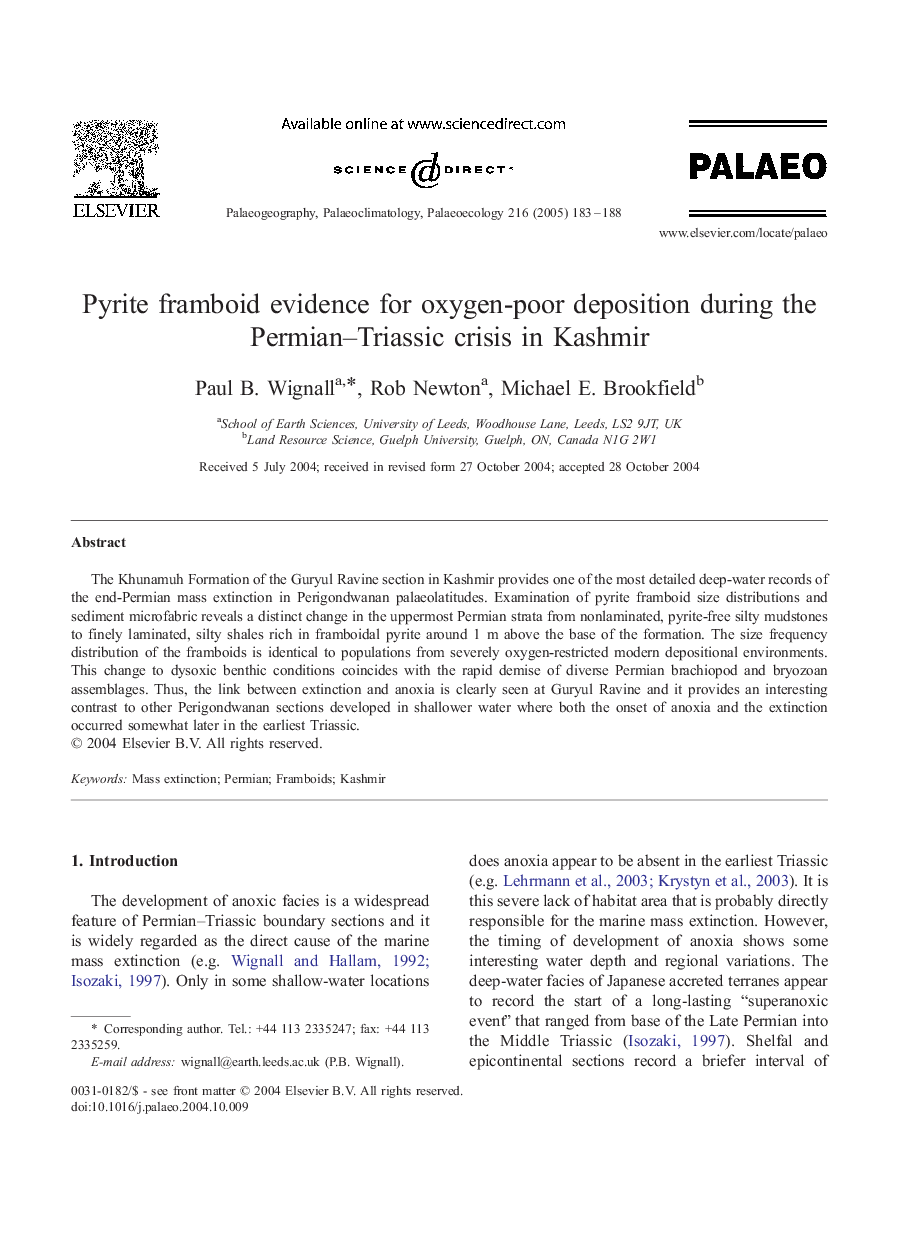| کد مقاله | کد نشریه | سال انتشار | مقاله انگلیسی | نسخه تمام متن |
|---|---|---|---|---|
| 9463260 | 1622404 | 2005 | 6 صفحه PDF | دانلود رایگان |
عنوان انگلیسی مقاله ISI
Pyrite framboid evidence for oxygen-poor deposition during the Permian-Triassic crisis in Kashmir
دانلود مقاله + سفارش ترجمه
دانلود مقاله ISI انگلیسی
رایگان برای ایرانیان
موضوعات مرتبط
مهندسی و علوم پایه
علوم زمین و سیارات
فرآیندهای سطح زمین
پیش نمایش صفحه اول مقاله

چکیده انگلیسی
The Khunamuh Formation of the Guryul Ravine section in Kashmir provides one of the most detailed deep-water records of the end-Permian mass extinction in Perigondwanan palaeolatitudes. Examination of pyrite framboid size distributions and sediment microfabric reveals a distinct change in the uppermost Permian strata from nonlaminated, pyrite-free silty mudstones to finely laminated, silty shales rich in framboidal pyrite around 1 m above the base of the formation. The size frequency distribution of the framboids is identical to populations from severely oxygen-restricted modern depositional environments. This change to dysoxic benthic conditions coincides with the rapid demise of diverse Permian brachiopod and bryozoan assemblages. Thus, the link between extinction and anoxia is clearly seen at Guryul Ravine and it provides an interesting contrast to other Perigondwanan sections developed in shallower water where both the onset of anoxia and the extinction occurred somewhat later in the earliest Triassic.
ناشر
Database: Elsevier - ScienceDirect (ساینس دایرکت)
Journal: Palaeogeography, Palaeoclimatology, Palaeoecology - Volume 216, Issues 3â4, 1 February 2005, Pages 183-188
Journal: Palaeogeography, Palaeoclimatology, Palaeoecology - Volume 216, Issues 3â4, 1 February 2005, Pages 183-188
نویسندگان
Paul B. Wignall, Rob Newton, Michael E. Brookfield,